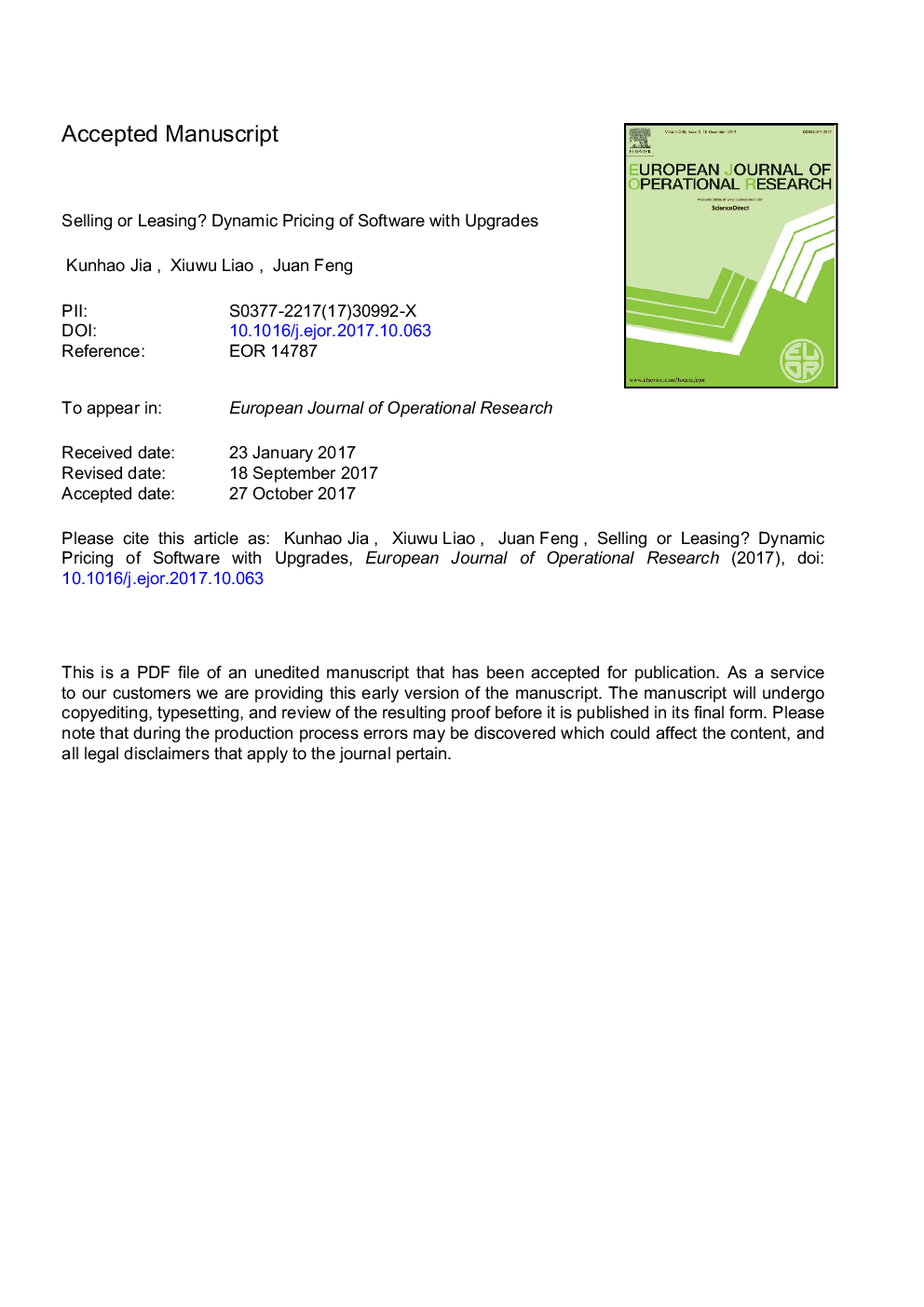| Article ID | Journal | Published Year | Pages | File Type |
|---|---|---|---|---|
| 6895123 | European Journal of Operational Research | 2018 | 46 Pages |
Abstract
In this paper, we analyze the profitability of a selling and a leasing model by considering both software upgrades and different price discrimination strategies in a two-period model framework. Three price discrimination strategies are considered: inter-temporal, behavior-based, and a hybrid price discrimination strategy. We find that consumers' inter-temporal purchase behaviors and a vendor's choice of price discrimination strategies make it possible for a selling model to be more profitable than a leasing model. More specifically, if the monopolist cannot commit to never using information about consumers' past purchase behavior for price discrimination, the selling model is more profitable than the leasing model. We also find that if a selling model is adopted, the monopolist should choose the behavior-based price discrimination strategy with a reward for returning consumers; but if a leasing model is adopted, the monopolist should choose the inter-temporal price discrimination strategy with a rising price. We also extend our model to a duopoly market. Different from a monopoly case, we find that the selling model dominates the leasing model under the hybrid strategy, while these two models are equally profitable under the inter-temporal strategy. These findings provide new insights into the comparison of the selling and leasing models.
Keywords
Related Topics
Physical Sciences and Engineering
Computer Science
Computer Science (General)
Authors
Jia Kunhao, Liao Xiuwu, Feng Juan,
